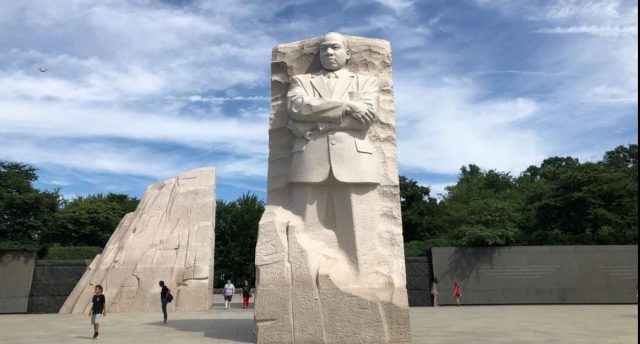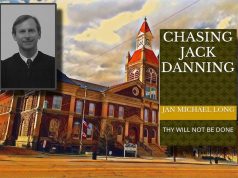Martin Luther King Jr. Day is a federal holiday in the United States celebrated on the third Monday of January. It honors the legacy and contributions of civil rights leader Martin Luther King Jr. to the advancement of civil rights for African Americans and for the overall American society.
It was on a bright and sunny day in Montgomery, Alabama, where a young Martin Luther King Jr. stood before a crowd of thousands at the Lincoln Memorial. He had just finished delivering his famous “I Have a Dream” speech, in which he spoke of his vision for a future where all people, regardless of their race, would be treated as equals. The crowd was enraptured by his words, and many were moved to tears by the powerful message of hope and unity that he had delivered.
As Martin looked out over the sea of faces, he couldn’t help but feel a sense of triumph and accomplishment. For years, he had been at the forefront of the Civil Rights Movement, fighting tirelessly for the rights of African Americans. He had faced opposition, violence, and even death threats, but he had never wavered in his belief that change was possible. And now, as he looked out over the crowd, he knew that his dream was finally becoming a reality.
Martin’s journey to this moment had not been an easy one. He was born in Atlanta, Georgia in 1929, and from a young age, he was aware of the deep racial divide that existed in the United States. As a child, he had witnessed the discrimination and racism that his family and community had faced, and he knew that something needed to be done to bring about change.
Martin Luther King Jr. Day is a federal holiday in the United States celebrated on the third Monday of January. It honors the legacy and contributions of civil rights leader Martin Luther King Jr. to the advancement of civil rights for African Americans and for the overall American society.
It was on a bright and sunny day in Montgomery, Alabama, where a young Martin Luther King Jr. stood before a crowd of thousands at the Lincoln Memorial. He had just finished delivering his famous “I Have a Dream” speech, in which he spoke of his vision for a future where all people, regardless of their race, would be treated as equals. The crowd was enraptured by his words, and many were moved to tears by the powerful message of hope and unity that he had delivered.
As Martin looked out over the sea of faces, he couldn’t help but feel a sense of triumph and accomplishment. For years, he had been at the forefront of the Civil Rights Movement, fighting tirelessly for the rights of African Americans. He had faced opposition, violence, and even death threats, but he had never wavered in his belief that change was possible. And now, as he looked out over the crowd, he knew that his dream was finally becoming a reality.
Martin’s journey to this moment had not been an easy one. He was born in Atlanta, Georgia in 1929, and from a young age, he was aware of the deep racial divide that existed in the United States. As a child, he had witnessed the discrimination and racism that his family and community had faced, and he knew that something needed to be done to bring about change.
After completing his education, Martin became a minister and began to speak out against the injustices that he saw around him. He quickly became a leading figure in the Civil Rights Movement, and his speeches and actions inspired thousands of others to join the fight for equality.
One of his most notable campaigns was the Montgomery Bus Boycott, which began in 1955 after the arrest of Rosa Parks for refusing to give up her seat on a bus to a white passenger. Martin organized a boycott of the city’s buses and led a successful 381-day protest that resulted in the Supreme Court declaring the city’s bus segregation laws unconstitutional.
Martin’s efforts, however, were met with fierce resistance. He and his family received death threats, and their home was even firebombed. Nevertheless, Martin persisted, and his unwavering commitment to the cause of civil rights earned him a reputation as a powerful and charismatic leader.
As the Civil Rights Movement gained momentum, Martin’s fame and influence grew. He delivered speeches at rallies and marches all over the country, and his message of nonviolence and peaceful protest resonated with people of all races and backgrounds.
One of his most famous speeches was the “I Have a Dream” speech, delivered on August 28, 1963, on the steps of the Lincoln Memorial. The speech, which was delivered to a crowd of over 250,000 people, called for an end to racism and the creation of a society where all people were treated as equals. Martin spoke of his dream that one day, his children would “not be judged by the color of their skin, but by the content of their character.” The speech was widely seen as a turning point in the Civil Rights Movement and Martin’s message continues to resonate with people today.
Martin’s efforts and dedication to the cause of civil rights eventually earned him the Nobel Peace Prize in 1964. However, despite the progress that had been made, Martin knew that the fight was not yet over. He continued to speak out against injustice and discrimination, and he devoted himself to improving the lives of the poor and oppressed.
On August 27, 1984, President Reagan established a commission (98 Stat. 1473) to assist in the first observance of the Federal legal holiday honoring Martin Luther King Jr., and on January 18, 1986, President Reagan signed Proclamation 5431 (100 Stat. 4396), marking the first observance of his birthday a national holiday.
On August 23, 1994, President Clinton signed the Martin Luther King Jr. Federal Holiday and Service Act (108 Stat. 1565), expanding the mission of the holiday as a day of community service, interracial cooperation and youth anti-violence initiatives. In 1999, Title 4, United States Code, (113 Stat. 1285), was amended to add the Martin Luther King Jr. holiday to the list of days on which the flag should be displayed.











